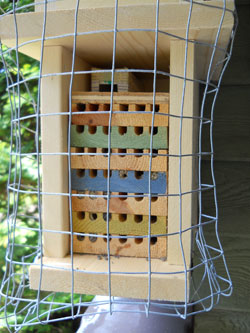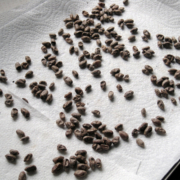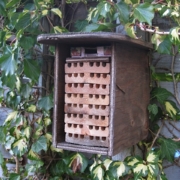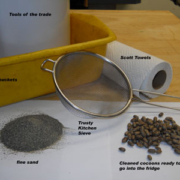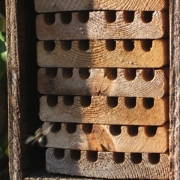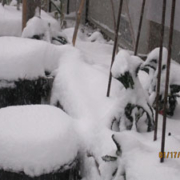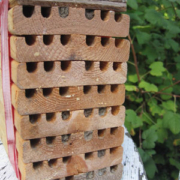Mason Bee…Near Tragedy
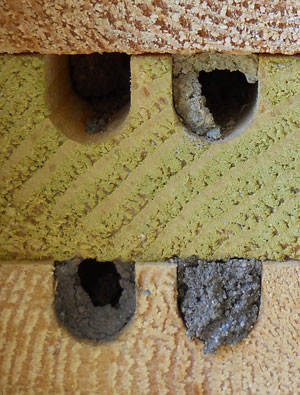
Damage to mason bee channels by pesky woodpecker
At the end of the day a few weeks ago I went onto my porch to check on my bees and discovered to my horror that a woodpecker had visited my bee condos. As the photo shows, almost all of the mudded-up channels had been opened. There were shards of clay lying all over the place and I was depressed at what appeared to be a serious blow to this year’s effort at bee husbandry.
However, it was not as bad as it seemed at first. The mason bee is a clever little creature, and it seems the females leave an empty space behind the last bit of mud in a channel before the larvae compartments start, so even a bird with a long beak can only get in as far as the first one or two larvae. I definitely lost some larvae, but what is more of a concern is that the bird might eat some of the adult bees and indeed this seems to have been the case. Mason bees are only out of the condo during the warmest parts of the day, usually late morning to late afternoon, in my garden. If the bird arrived when they were still home, then the adults can be picked out of the channels quite easily, and a headcount later that evening confirmed this. I have been keeping track of the number of active females and prior to the rampage, there were 23 and that dropped the next day to about 15.
I have been able to find a quick and effective fix for this problem, and if you see Northern Flickers or any other type of Woodpecker, large or small, in your garden you might want to do the same. I used tin snips to cut a rectangular piece of wire mesh with one-inch squares to fashion a sort of cage around the condos, and screwed in into place with a few screws and washers to hold the wire tight. Be sure to leave a space of at least four inches from the wire to the entry holes. 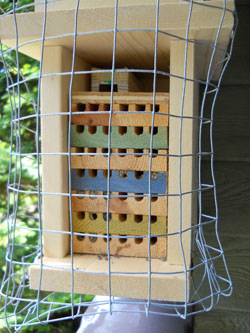
It looks a little like the condo is wearing an old goalie’s mask, but it has worked perfectly: the bees navigate their way through the wire with little trouble, and my wife, Michele, has since seen Woodpeckers trying unsuccessfully to get at the larvae. They can’t and they soon fly away, perhaps to visit YOUR unprotected bee condos. Almost all the channels that were opened have been used again by the bees and are tightly shut. At last count I have 31 channels completely sealed and many others partly so.
Please feel free to let me know on this blog site how this has worked for you, or if you have similar experiences or a good system for protecting your condos.
Good Luck with your bees!
